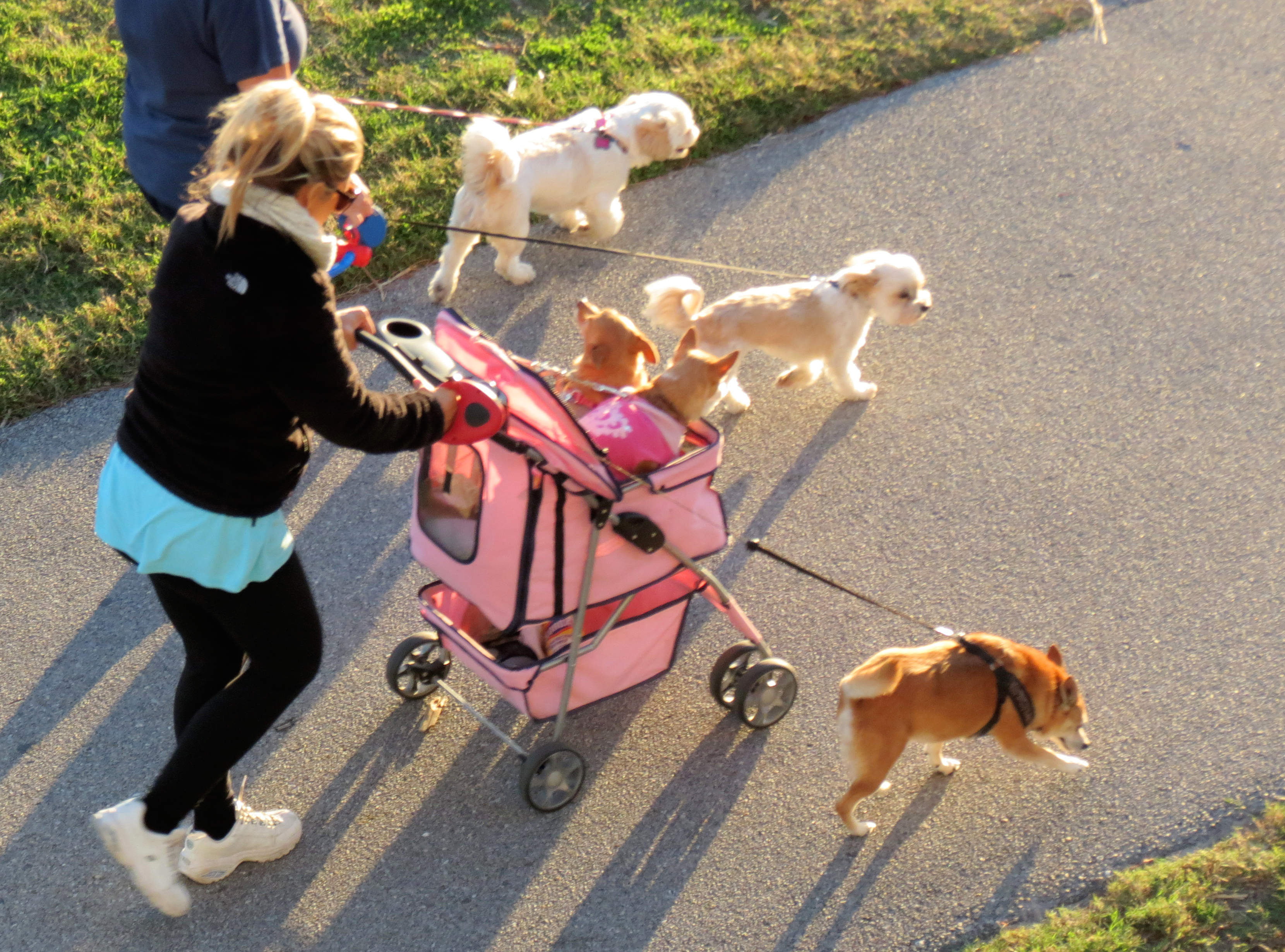
Dogs Rule in Our Snowbird Community
Etiquette for Snowbird Dogs, Owners
There’s no doubt about it, dogs rule in our snowbird community. They are virtually everywhere -- on the sidewalk, in vehicles and pet strollers, on the beach and balconies / patios and even the outdoor areas of beachfront restaurants. Pet friendly housing is a huge consideration, particularly for larger breeds. Low and high rise condos may or may not accept dogs, especially from renters, and if they do, only dogs below a designated weight, such as 30 pounds. Of course, additional fees usually apply to pets, so be prepared.
Before arriving, look into the rules about dogs on the beach and other restrictions. In our community, non-resident dogs are not permitted on the sand and yes, they do patrol and give tickets for violations. Most restaurants allow well-behaved, leashed dogs on the outdoor patio either during certain hours or all the time, weather permitting. It's best to check first to make sure.
Sidewalk Life
Anyone who doesn’t like or want to hear or encounter dogs in their place of residence, on the sidewalk or anywhere else in public should take it into consideration when selecting or returning to a snowbird community. Along those same lines, if you aren't a big fan of people on bikes, skates, skateboards or other wheeled apparatus (or people in general), it's a similar situation as dogs because sidewalk life is a big deal for snowbirds. Most snowbirds live in multi-unit condo or high rise buildings so the primary green space is likely the sidewalks and bike paths along the beach. If the average dog has business to attend to about 4 to 6 times a day, it adds up over the span of a week or month or winter.
Misdirected Emotions
I have friends and family who aren't that fond of dogs, but it's even more unpleasant when total strangers direct hostility towards pet parents. I've personally encountered some outright anger. One was a neighbor in our building who claimed our terminally ill Golden Retriever was "barking incessantly." Highly improbable, considering our dog was almost physically unable to, but we were extra careful after that. Another time, a woman on the sidewalk waited until she had just passed me and burst out with an obscenity about how irritated she was that my puppy was in her way. He wasn't, but she apparently was looking for a scapegoat. Because of the hostility from neighbors, it shows how important it is to do everything possible to make your pet blend in as much as possible, do their best with manners and leave no trace behind. After all, a neighbor who has a minor issue with you can make major problems by complaining about you and your pet. Avoid confrontation, follow all of the rules and take the tactic of becoming less visible.
Dog Etiquette
Of course, restraining your dog from excessive barking when in your warm weather home is expected along with immediately picking up pet waste when in public. Street manners include staying to the right side, staying off the grass of private property and always keeping your dog restrained on a leash. We go so far as to require our dog to sit down in the grass when bicycles and pedestrians are approaching from either direction. This can be cumbersome on a busy day, but our dog is less likely to try to jump up to greet a stranger when already sitting down. He usually receives a smile or nod of appreciation for doing so. Frankly, it's not only super cute, but very respectful when a dog sits at attention in your honor while walking along the sidewalk.
To Socialize or Not
Some pet parent snowbirds don't mind and even seem to welcome socializing their dogs with others. It's a great way to make new friends in your snowbird community. We tend to see the same dogs each year---and just like at home, I know the dogs' names and their parents' faces.
However, other pet parents do not want or have time to socialize with you and your dog. It's not unusual for some dogs to not get along with others and / or their owners. It's likely not personal, but you should be prepared for the brush off. We generally stick with a reserved approach to socializing our dog with new dogs until the owner initiates interest, especially because our young dog is larger and more exuberant than the other dogs we encounter.
With or without a dog, keep a conservative approach to socializing with fellow pets in public. If you want to seek out the snowbird pet parents who are most likely to befriend you, visit the local dog park and look for the business establishments who allow dogs in their stores and on their patios and decks.


